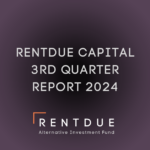Understanding a Self-Directed IRA (SDIRA)
A Self-Directed Individual Retirement Account (SDIRA) is a variation of a traditional, Roth, or Simplified Employer Pension (SEP) IRA that offers greater flexibility in the types of investments it can hold. Unlike regular IRAs, which typically limit investments to common securities like stocks, bonds, CDs, and mutual funds or ETFs, SDIRAs allow for a broader array of assets, including real estate, tax lien certificates, and other alternative investments. This flexibility can benefit savvy investors seeking diversification in a tax-advantaged account. However, managing an SDIRA requires thorough research and due diligence, as account holders are responsible for directing their investments.
How to Open a Self-Directed IRA (SDIRA)
- Choose a Custodian:
- SDIRAs are not available through traditional brokerages and investment companies. Instead, you need to find specialized firms that provide SDIRA custodian services. Look for reputable custodians like Nevada Trust Company®.
- Set Up the Account:
- Complete the custodian’s new account application packet.
- Provide necessary identification and personal information.
- Choose between a traditional, Roth, or SEP SDIRA, depending on your retirement planning needs and tax preferences.
- Fund the Account:
- Contribution: You can contribute to your SDIRA following the same rules as regular IRAs. For 2023, the contribution limit is $6,500 for individuals under 50 and an additional $1,000 catch-up contribution for those over 50.
- Transfer or Rollover: Transfer funds from an existing IRA or rollover funds from an employer-sponsored retirement plan like a 401(k).
- Select Investments:
- Once your account is funded, you can start investing in a wide range of assets such as real estate, private companies, precious metals, tax lien certificates, and more.
- Conduct thorough due diligence before making any investment to ensure it complies with IRS rules and regulations.
Managing Your SDIRA
- Due Diligence and Research:
- As the account holder, you are responsible for managing and directing your investments. This includes conducting due diligence and understanding the risks associated with each investment.
- Compliance:
- Ensure all investments comply with IRS rules. Prohibited investments include collectibles and life insurance. Refer to IRS Publications 590 A & B for detailed guidelines.
- Record Keeping:
- Maintain accurate records of all transactions, including purchase and sale agreements, deeds, and contracts. This is essential for tax reporting and compliance.
- Seek Professional Advice:
- Consider consulting with a financial advisor experienced in managing SDIRAs. They can provide guidance and help you make informed investment decisions.
Taxes, Withdrawals, and Contributions
- Contributions:
- Follow the annual contribution limits set by the IRS. For 2023, the limit is $6,500, with an additional $1,000 catch-up contribution for those over 50.
- Withdrawals:
- Withdrawals from an SDIRA before the age of 59½ are subject to regular income taxes and a 10% penalty on the withdrawal amount.
- At age 73, you are required to start taking Required Minimum Distributions (RMDs). The amount is based on your account balance and life expectancy.
Risks and Considerations
- Fees:
- Be aware of potential fees associated with SDIRAs, including account setup fees, annual maintenance fees, and transaction fees.
- Fraud and Scams:
- Due to the nature of alternative investments, there is a higher risk of encountering fraud or fraudulent investment schemes. Conduct thorough research and verify the legitimacy of any investment opportunity.
- Complexity:
- Managing alternative investments can be complex and time-consuming. It requires a higher level of understanding and involvement compared to regular IRAs.
Conclusion
Self-Directed IRAs offer greater investment flexibility and control over your retirement funds. However, they require active management and a thorough understanding of investment options and IRS regulations. SDIRAs are best suited for experienced investors with extensive knowledge of the financial markets and alternative investments. If you are considering an SDIRA, be prepared to conduct thorough research, manage your investments actively, and seek professional advice when necessary.
How to Fund Your SDIRA
- Complete the New Account Packet:
- Fill out the necessary forms provided by your SDIRA custodian, such as Nevada Trust Company®.
- Fund the Account:
- Contribution: Make a direct contribution within the annual limits.
- Transfer or Rollover: Transfer funds from an existing IRA or rollover funds from a 401(k).
- Start Investing:
- Once your account is funded, you can start purchasing assets like real estate, life settlements, precious metals, and more.
- Seek Assistance:
- Contact your custodian for a new account application and further assistance. They can walk you through the process and answer any questions you may have.
By following these steps and guidelines, you can effectively set up and manage a Self-Directed IRA, giving you greater control and flexibility over your retirement investments.

